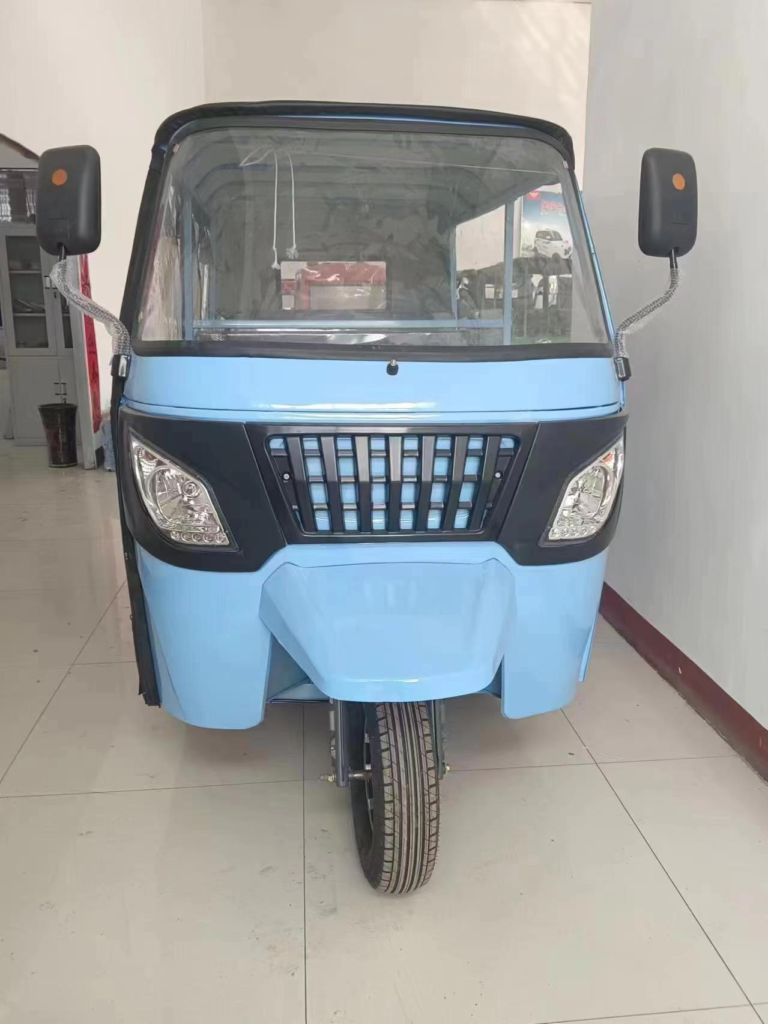Electric tricycles, often referred to as e-trikes, have been gaining significant popularity in recent years. These eco-friendly vehicles combine the convenience and stability of a tricycle with the power of electric motors, offering an alternative to traditional bicycles and cars. In this article, we will explore the basic structure and working principles behind an electric tricycle, focusing on its components, operation, and the growing appeal of the electric tricycle for adults.

I.Structure of an Electric Tricycle
An electric tricycle consists of several key components that work together to ensure a smooth and efficient ride. The primary parts include the frame, wheels, battery, motor, and controller. Let’s take a closer look at each of these components.
Frame and Wheels
The frame of an electric tricycle is similar to that of traditional tricycles, though it is designed to accommodate the additional weight of the electric motor and battery. The frame is typically made from durable materials like steel or aluminum to ensure stability and support. An electric tricycle for adults may also have a reinforced frame to handle heavier loads, making it suitable for longer journeys and carrying cargo.
The tricycle has three wheels – two at the back and one at the front. This configuration provides excellent balance and stability, which is particularly beneficial for adult riders, including those who may have limited mobility or those who are new to cycling. The front wheel is usually responsible for steering, while the rear wheels provide the propulsion and support.
Battery
The battery is one of the most important components of an electric tricycle, as it powers the motor. Typically, these batteries are lithium-ion or lead-acid, depending on the model and intended use. A lithium-ion battery is lighter, has a longer lifespan, and offers better performance, which is why it is commonly found in higher-end e-trikes electric tricycles.
The battery is usually located in the center of the frame, providing a balanced weight distribution. The capacity of the battery determines how far the electric tricycle can travel on a single charge. For most electric tricycles, the range can vary from 20 to 60 miles, depending on the terrain and riding conditions.
Motor
The motor is the heart of an electric tricycle. It provides the necessary power to propel the tricycle forward. Most electric tricycles use a hub motor, which is located in the wheel hub (usually the rear wheel). The motor is powered by the battery and works in conjunction with the tricycle’s pedal system.
In some models, the motor can be activated through a throttle, allowing the rider to control the level of assistance they receive while pedaling. The motor’s power is measured in watts, with typical e-trikes electric tricycles offering motors ranging from 250 watts to 750 watts. More powerful motors are designed for heavy-duty use or hilly terrain.
Controller
The controller acts as the brain of the electric tricycle. It manages the power flow from the battery to the motor based on the rider’s inputs. The controller is responsible for regulating the speed and ensuring the motor operates efficiently. It also manages the power usage to extend the battery life.
When you press the throttle or start pedaling, the controller adjusts the motor’s power output to match the required speed. Additionally, the controller also helps with features such as regenerative braking, which recovers energy when slowing down and sends it back to the battery.
II.Working Principle of an Electric Tricycle
Now that we understand the structure of an electric tricycle, let’s dive into how it works. The operation of an electric tricycle is straightforward but involves a few key principles.
Pedal Assist and Throttle Control
Many electric tricycles come with two primary modes of operation: pedal assist and throttle control. In pedal assist mode, the rider pedals normally, and the motor provides additional power to help with pedaling. This mode is ideal for riders who still want to get some exercise but need assistance when tackling hills or long distances.
In throttle mode, the rider can control the motor’s power output with a throttle, similar to how a motorcycle works. This allows the rider to operate the tricycle without pedaling, making it a convenient option for those who need a break from pedaling or want a more relaxed ride.
Power Delivery
When the rider activates the motor, either through the throttle or pedal assist, the controller receives the signal and delivers power from the battery to the motor. The motor then drives the rear wheels, propelling the tricycle forward. The rider can control the speed by adjusting the throttle or the level of pedal assist.
The motor’s power output varies depending on the terrain and the rider’s input. For example, when riding uphill, the motor may provide more assistance to make pedaling easier. On flat ground, the motor’s assistance is typically less, allowing the rider to enjoy a more traditional cycling experience.
Braking System
Electric tricycles are typically equipped with either disc or drum brakes, which are essential for safety. The braking system is integrated with the motor and controller to ensure smooth deceleration. In some models, electric tricycles feature regenerative braking, which converts kinetic energy into electrical energy when the rider brakes, sending this energy back to the battery for later use. This feature helps extend the range of the tricycle and makes it more efficient.
III.Conclusion
Electric tricycles are becoming an increasingly popular mode of transport due to their convenience, eco-friendliness, and ease of use. Whether you are looking for a sustainable commuting option or an efficient way to carry goods, the electric tricycle for adults provides a comfortable and reliable solution. With advancements in battery and motor technology, e-trikes electric tricycles are continuously improving, offering riders better performance, longer ranges, and more innovative features. Understanding the basic structure and working principles of these vehicles is key to appreciating their functionality and potential, and they are poised to play a significant role in the future of green transportation.